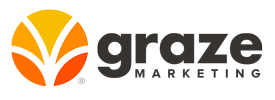Wondering how to build a brand identity? In today’s digital world, building a strong brand online is essential for businesses of all sizes and a strong brand can differentiate your business from competitors. Also, it can increase customer loyalty which supports in long-term growth and success. Let’s cover the key steps to building a stronger brand identity online.
Time to Build a Brand Identity – Why is it Important?
It’s important to understand what a brand is and why it’s important to build a strong brand online. A brand is the identity of your business, encompassing everything from your company’s mission and values to the visual design of your website. Customer perception of what your brand is relies on your marketing efforts to create and reinforce it. Building a strong brand online can help establish trust with potential customers, increase brand recognition, and ultimately lead to more sales.
Define Your Brand Identity
The first step in building a strong brand online is defining your brand identity. For example, this means understanding your company’s mission and values, what sets your brand apart from competitors, and developing a brand voice and tone that reflects your identity. A good way to start is by answering these questions:
- What is your company’s mission and values?
- What makes your brand unique and different from top competitors?
- How do you want customers to perceive the brand you are building?
Finding the answers to these questions are the key to build a brand identity document. A simplified version of a brand identity document might include some of the following elements:
- Pillars: Roughly 5 – 10 individual words you want to use to describe your brand.
- Descriptions: 1 sentence, 1 paragraph and a 1 page description of your business to answer the who, what, when, where, why, how questions related to your company.
- Positioning: Information about your target audience, target market, competitors, differentiation, etc. This helps to find your competitive advantage as it relates to your brand.
- Fonts: The font types that you plan to utilize in all of your marketing materials both online and offline.
- Colors: Identifies the colors that are approved for use in marketing materials.
- Voice: The tone or positioning to take when creating text content.
- Samples/Mock Ups: A look at what particular types of marketing materials will look like using the identity document as a guide.
This brand identify exercise and associated document is absolutely critical in taking the next steps towards establishing, promoting and reinforcing your brand online.
The Importance of Visual Consistency with Brand Image
When it comes to your brand, consistency is extremely important. In marketing, success isn’t measured by each individual action taken or isolated to one asset at a time. Marketing is a marathon and you must keep pace over a long period of time. Your brand identity helps to make sure you maintain a consistent presence online and helps you to clearly present your brand and what you have to offer. For example, this process will include developing a strong visual identity that reflects your brand’s personality. We have some tips for creating a strong and consistent brand image:
- Create a memorable logo that reflects the brand’s identity you have defined.
- Choosing a color pallet that will be consistent across all marketing materials.
- Choose a primary font and secondary font that complements your brand’s personality.
Constantly Engage with Your Audience
Building a strong brand identity online requires engaging with your audience on a regular basis. Social media is a great way to connect with customers and build brand awareness. Here are some ideas for engaging your audiences:
- Create engaging content that resonates with your target audience.
- Build connected relationships with your followers and remember to ask for feedback.
- Be sure your content has a visual appeal for higher retention and engagement.
- Share content created by other users that showcase your brand. This creates a stronger sense of community.
By engaging with your audience, you can build a loyal following that will support your brand long-term. A stronger brand supports audience growth and development and engaging this audience helps to create more customer loyalty.
Build Your Overall Online Presence
A strong online presence is essential for building a strong brand with the vast majority of people researching online before making a purchase. This is for everything from B2B businesses to direct-to-consumer brands and spans all industries to varying degrees. One study looking at “local” shopping behaviors found that 76% of consumers look at a company’s online presence before visiting in-person, according to a report from Visual Objects.
A strong online presence includes having a modern, professionally designed website that is optimized for search engines (SEO). What this means is simply that the website utilizes best practices to improve the sites ability to rank higher in the search results. SEO can be broken up into a few categories:
- On-Page Signals: Aspects of your website that influence your rank. This is everything from how your site is organized to the types of content you have on your site.
- Off-Page Signals: This looks at links, social engagement, and other signals found on other sites throughout the web.
- Local Signals: Your Google Business Profile is the biggest factor impacting your local rankings but also location-specific keywords found on your site supports this as well.
- Technical SEO: This area of SEO looks at your website and some of the “hidden” elements that make it easier for site crawlers to analye, interpret and assign relevant based on a particular keyword search.
Each one of these areas of SEO could be expanded upon in great detail, but this offers a quick view of some of the things to consider as it relates to your brand’s ability to be found online. The objective is to attract more visitors to your website and increase brand awareness by putting efforts in making your business easier to find online.
Monitor and Measure Your Brand Performance With Analytics
Do you want to ensure that your brand building efforts are working? It’s important to track and measure your brand performance and key metrics that help to quantify your brand lift over time. For example, some key metrics to track are website traffic, social media engagement, branded keyword search, conversions and more. There may also be times when you run a particular campaign on traditional media and you need to understand how it impact online activity. Having the right data in place is critical in order to track these brand building efforts and campaigns.
Conclusion
A strong brand online is essential for long-term success. By defining your brand identity, creating a consistent brand image, engaging with your audience, building your online presence, and monitoring your brand performance, you can create a strong brand that resonates with the right people. Additionally, it is something you can look back on and be proud of.
If you’re looking to build a brand identity document, logo, website or any other foundational brand asset, our creative marketing agency can help. Check out our portfolio for samples or contact us today to start a conversation.

